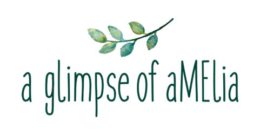TUESDAY REVIEW
Glen 20 Disinfectant Spray
You won’t know what the ingredients are in Glen 20 because they are proprietary. But I can tell you it contains:
•Ethanol- Responsible for killing bacteria and viruses
•Denatured alcohol – Perfume
•Butane
•Propane
• 1.3 butadiene= Irritation of the eyes, nasal passages, throat, and lungs. Neurological effects, such as blurred vision, fatigue, headaches, and vertigo, have also been reported at very high exposure levels. EPA has classified 1,3-butadiene as carcinogenic in humans by inhalation.
Aside from these above ingredients, disinfectants can contain quaternary ammonium compounds such as benzalkonium chloride, pine oil, alcohol, phenol or derivatives of phenol, cresol, TCE, PDCBs, butyl cellosolve, detergents, and formaldehyde. Another popular chemical added to disinfectants is triclosan, although we cannot confirm if this is added to Glen 20.
A disinfectant is a product used to rapidly kill bacteria. It’s designed to kill 99.9% of bacteria in a spray that is typically used for benchtops, handles, airborne smells, furniture, bathrooms or other surfaces around the home.
It claims to be hospitable grade, which makes it sound like we should all choose to use it.
Aerosols in general can be terrible for people with compromised immune systems, allergies or asthma, and if you were going to use an aerosol spray, it needs to be used in a well-ventilated space, not inside a house or apartment with all the doors and windows shut.
To use this product correctly, the chemical must be sprayed until wet and left to air dry, meaning it stays on your surfaces. These surfaces you touch and potentially end up with this chemical in your mouth, your pets mouths or your children’s mouths and skin.
These types of disinfectants are designed to kill, the good and bad bacteria and viruses which exposed to dermally or orally, can play havoc on your microbiome.
A concern with using products like this around the home when used inappropriately is that they can actually help bacteria become resistant to the chemical, creating superbugs.
Glen 20 was created in 1966 after replicating the American brand Lysol.
Interestingly, Lysol lists its ingredients under the cross-industry initiative to bring “great disclosure and transparency to its hygiene and home products.”
Most health experts agree that one of the best ways to control airborne viruses is to open a window! “It’s really not possible to prevent the spread of germs in the house by using a disinfectant.”
Most doctors recommend (especially for children) fresh air, frequent hand washing, the washing of toys, telephones, or other frequently touched items, and the isolation of the sick from the healthy.
But we live with germs, we breathe germs and eat germs. Some are bad, but some are also very, very good. If we killed off all the germs we live with, we would get very sick. Staying healthy may have a lot more to do with living a balanced, natural life (pure foods, clean air, water, and rest) than with killing off “dangerous” germs.

